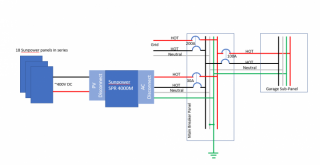Let's get the ball rolling with an over-simplified example:
The goal is to make a PV system that can produce electrical power cheaper that your local utility. (Let's assume rates in NA are around $0.10 to $0.30 per kWh, depending on cost of production at your location, time of day metering, etc.) For a PV system you will be buying equipment once for an up-front capital cost. After that, your operating costs can be assumed to be 0 for the service life of your equipment. So your cost per kWh will be reduced for every hour you operate.
The goal is to make a PV system that can produce electrical power cheaper that your local utility. (Let's assume rates in NA are around $0.10 to $0.30 per kWh, depending on cost of production at your location, time of day metering, etc.) For a PV system you will be buying equipment once for an up-front capital cost. After that, your operating costs can be assumed to be 0 for the service life of your equipment. So your cost per kWh will be reduced for every hour you operate.
- Let's say you can build a system for $1/w (to keep the math simple) So that's $1000 per KW.
- Let's also leave out the time value of money for now (interest rates are low) and the opportunity cost of not investing elsewhere.
- So, let's say you build a 1Kw system and operate it for one service life of all components - if it's 10,000 hours that would bring your cost down to $0.10 per kWh; and if it's 20,000 hours that would bring your cost down to $0.05 per kWh. Which is more realistic?





